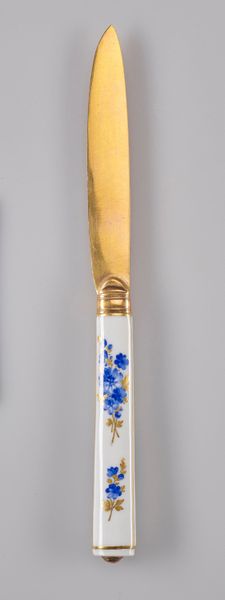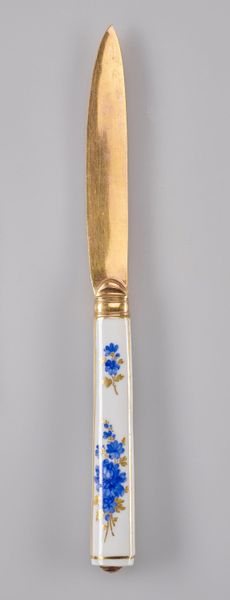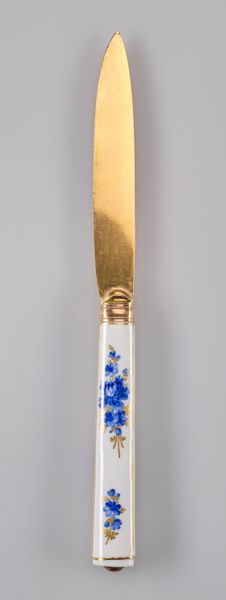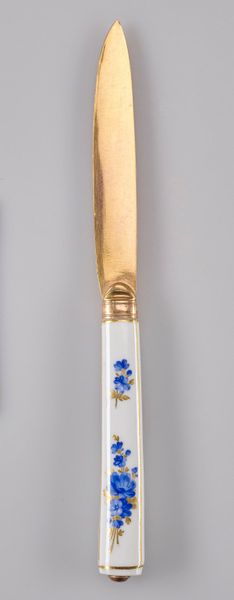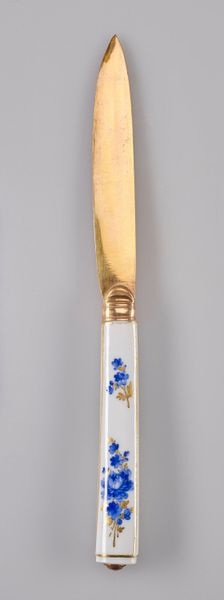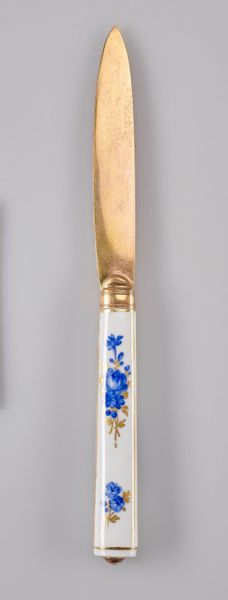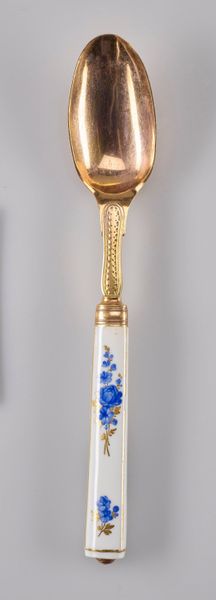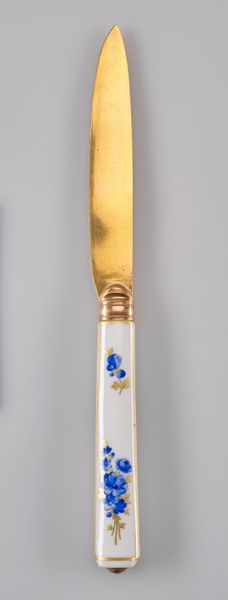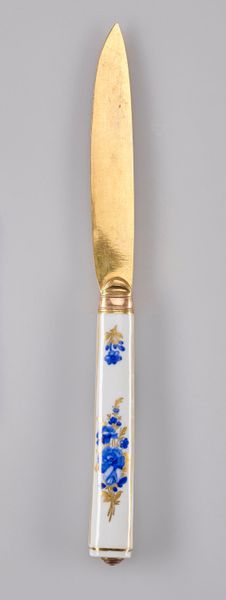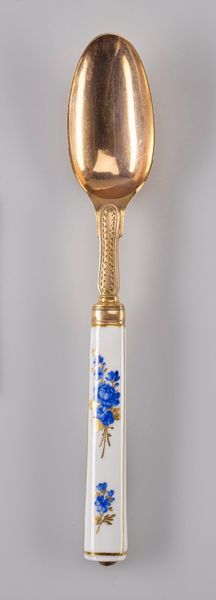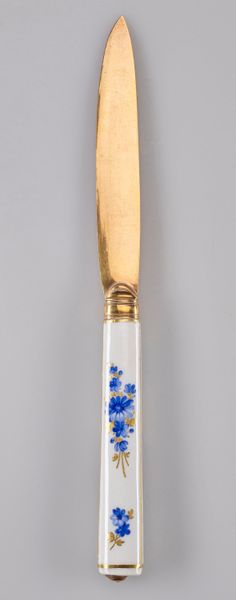
ceramic, hard-paste-porcelain, porcelain
#
ceramic
#
hard-paste-porcelain
#
porcelain
#
decorative-art
#
rococo
Copyright: Public Domain
Editor: Here we have an 18th-century knife crafted by the Meissen Porcelain Factory, showcasing both ceramic and hard-paste porcelain. The blue floral design on the handle really catches my eye – there’s a refined, almost delicate, quality. How do you interpret this work? Curator: What strikes me is the complex relationship between form and function, especially in light of the Rococo style. Can a knife, an object often associated with violence or basic necessity, be elevated to a symbol of wealth, status, and delicate beauty? The Rococo style was, in many ways, an art of the elite. Editor: I see what you mean! It’s more than just a utensil; it reflects social status. Is the material significant here? Curator: Absolutely! Porcelain, often called "white gold" at the time, signified luxury and exclusivity. It invites us to consider the historical context of production and consumption: who made it? Who used it? Whose labor enabled this artistry? Editor: It’s interesting how an everyday object becomes loaded with meaning when you consider those factors. Curator: Precisely. We must understand this object within the broader societal framework of class and power. What stories does its mere existence suppress or overshadow? Editor: That makes you rethink the intention behind decorative arts from that era. Thank you! It's a fresh perspective on something I thought was simply pretty. Curator: Glad to help! These objects aren't just beautiful; they’re complex artifacts embedded in history.
Comments
No comments
Be the first to comment and join the conversation on the ultimate creative platform.
